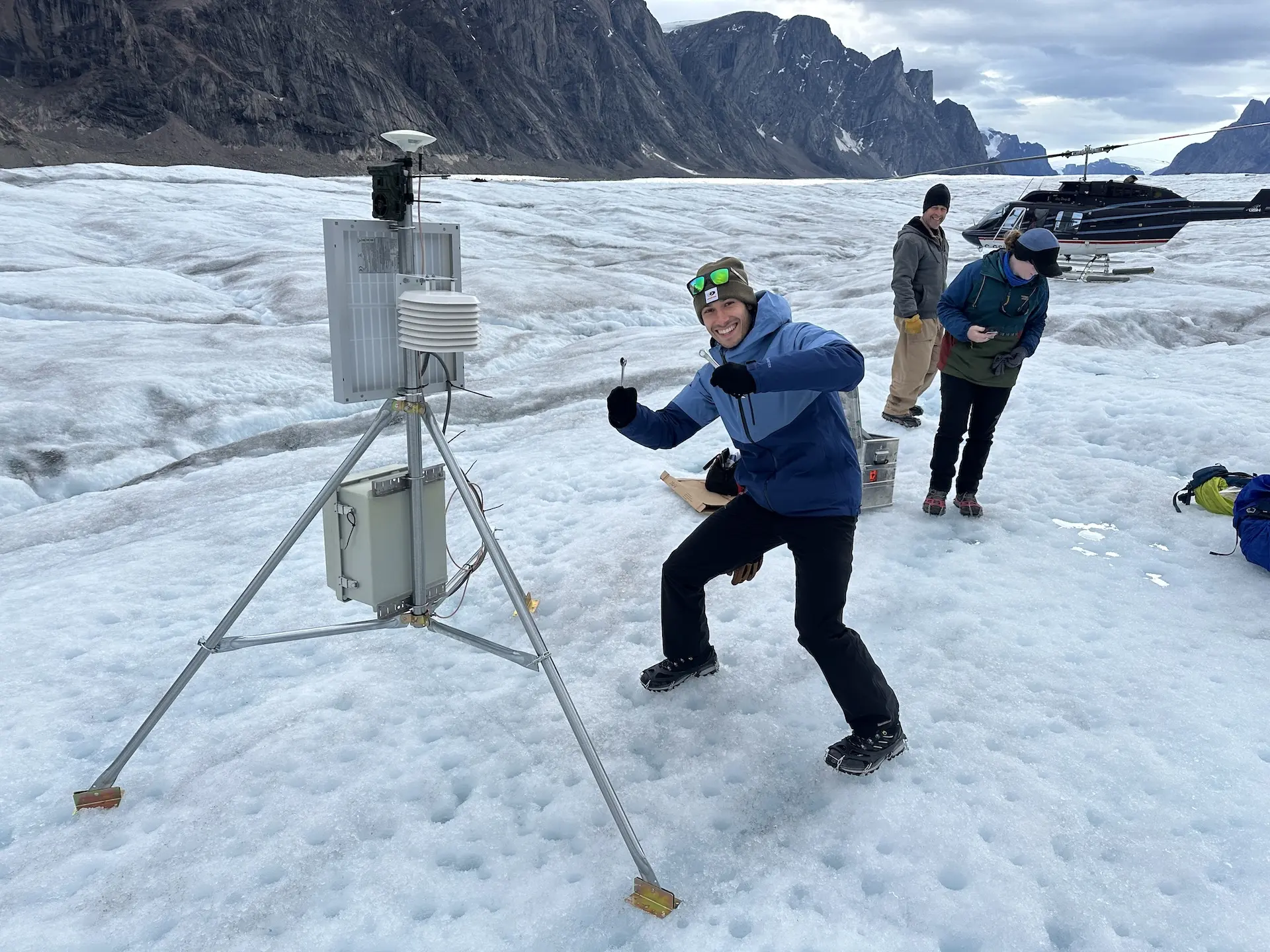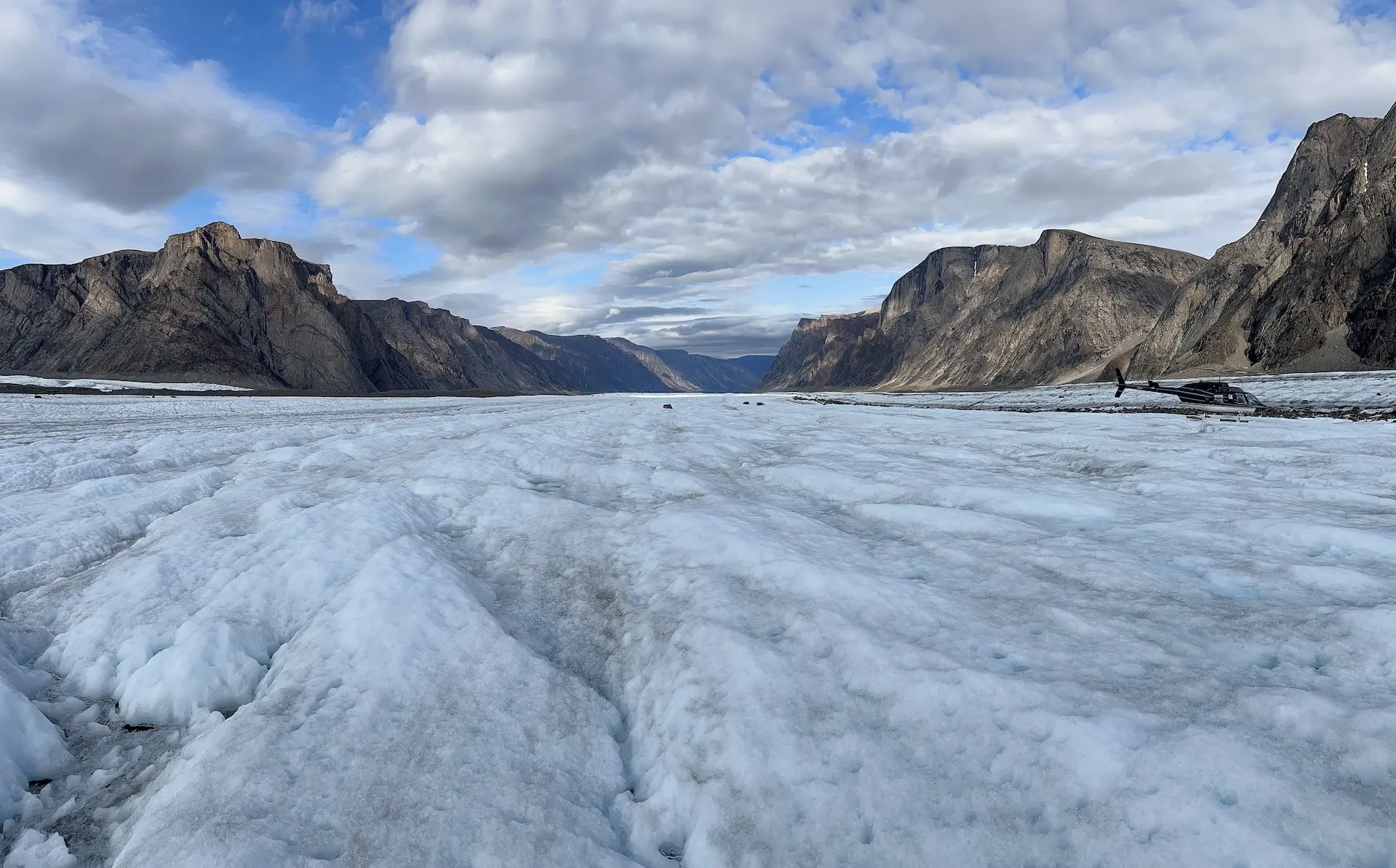July 30, 2024
Tracking Glacier Change on Coronation Glacier, Baffin Island, Nunavut
Posted by Adam Garbo

Introduction
In the summer of 2024, two Cryologger Glacier Velocity Trackers (GVTs) were installed on Coronation Glacier, a marine-terminating outlet of the Penny Ice Cap in southern Baffin Island, Nunavut. These open-source, low-cost instruments are designed for high-precision glacier velocity monitoring in remote environments. The deployments are part of a collaborative research effort led by PhD student Penelope Gervais and MSc student Domynik Huot at the University of Ottawa’s Laboratory for Cryospheric Research, under the supervision of Dr. Luke Copland (University of Ottawa) and Dr. Karen Alley (University of Manitoba).
📍 Why Coronation Glacier?
Penny Ice Cap is among the most rapidly changing glaciated regions in the Canadian Arctic Archipelago. Since the 1990s, it has undergone sustained ice loss and glacier thinning. Coronation Glacier, which still calves directly into the ocean, provides a useful contrast to neighbouring glaciers that have since become land-terminating.
The site offers an opportunity to study how marine-terminating glaciers respond to a warming climate, and how these changes influence the surrounding physical environment.
🛰️ About the Deployments

Master's student Domynik Huot deploying Cryologger GVT on Coronation Glacier, July 2024.
The GVT units were installed in July 2024 and are expected to remain operational through 2026. These autonomous loggers use high-precision GNSS (Global Navigation Satellite System) receivers to track glacier motion at daily intervals, providing ground-based velocity measurements that complement longer-term satellite observations. Field data from the Cryologger systems will help the research team to:
- Quantify variations in glacier flow speeds and calving dynamics
- Estimate freshwater discharge into downstream fjords
- Compare in situ velocities with satellite- and drone-derived datasets
In addition to the Cryologger installations, the 2024 field campaign also includes drone-based mapping of the glacier terminus, CTD (Conductivity-Temperature-Depth) casts in the fjord, and ground-penetrating radar surveys of ice thickness and subglacial terrain.
🔬 Research & Community Focus
Penelope Gervais is investigating how glacier runoff, sediment transport, and iceberg discharge influence valley and fjord hydrology on southern Baffin Island. Her project aims to understand the cascading effects of glacier retreat on aquatic ecosystems and coastal environments. Field measurements from the GVTs will be compared to historical satellite-derived glacier speeds dating back to the 1980s, helping to identify long-term trends in ice dynamics and freshwater input.
Domynik Huot is conducting a multi-decadal analysis of glacier mass balance and changes in velocity across the Penny Ice Cap. His work combines image-based feature tracking from archival aerial photographs and satellite imagery with ground-based high-precision GNSS data recorded by the GVTs. This integrated approach will improve estimates of ice loss and contributions to global sea-level rise from Baffin Island’s outlet glaciers.
As part of a larger research initiative with the Department of Fisheries and Oceans Canada and the community of Qikiqtarjuaq, this work provides crucial information to support understanding of the effects on regional ecosystems related to ocean circulation, primary productivity, and iceberg production, factors vital for local communities. The research offers insights into the consequences of retreating glaciers on aquatic ecosystems in glacial fjords and helps to inform efforts to preserve these regions, which serve as crucial hunting grounds for local Inuit communities.

View from the ice surface of Coronation Glacier, July 2024.
🧊 The Role of Cryologger
The Cryologger GVT is particularly well-suited for deployments like those on Coronation Glacier. Its ultra-low power consumption and rugged design make it ideal for remote Arctic fieldwork, where logistical access is limited and environmental conditions are harsh.
With high-precision GNSS positioning and autonomous logging over extended periods, the GVT provides continuous, ground-based glacier velocity measurements that would be difficult to obtain otherwise. These data complement satellite and drone observations, enabling researchers to capture both short-term variability and long-term trends in glacier dynamics.
By supporting multi-year deployments with minimal maintenance, Cryologger GVTs help fill critical data gaps in regions like the Canadian Arctic Archipelago, where traditional field methods are often impractical.
📷 Photo credits: Luke Copland, Penelope Gervais, Domynik Huot